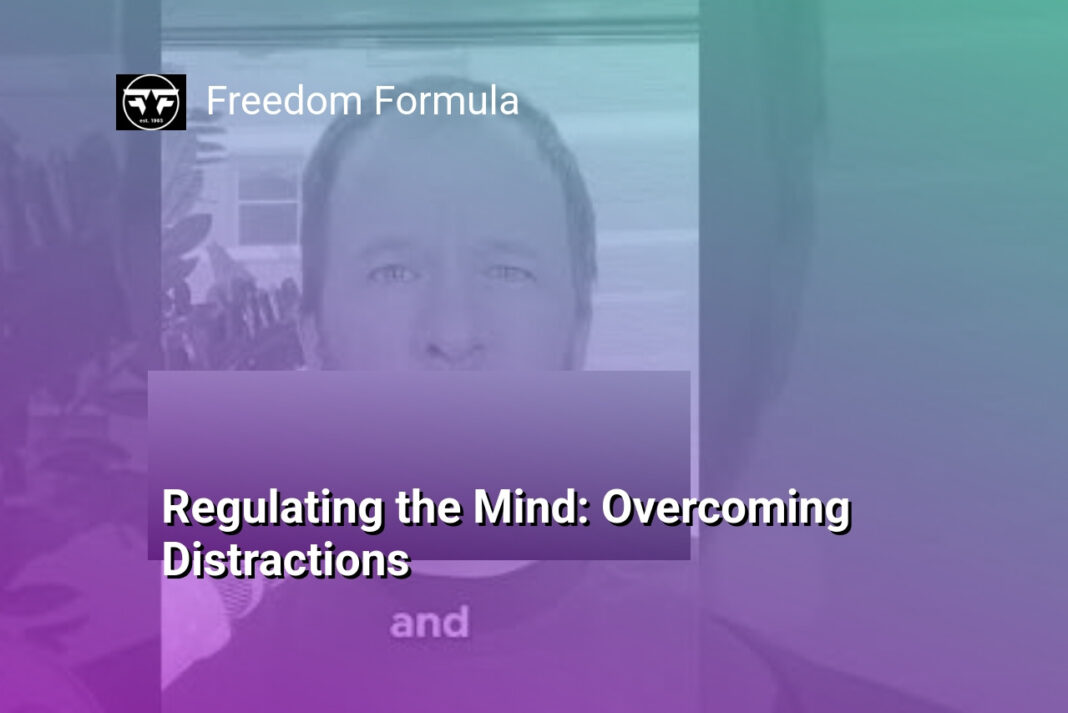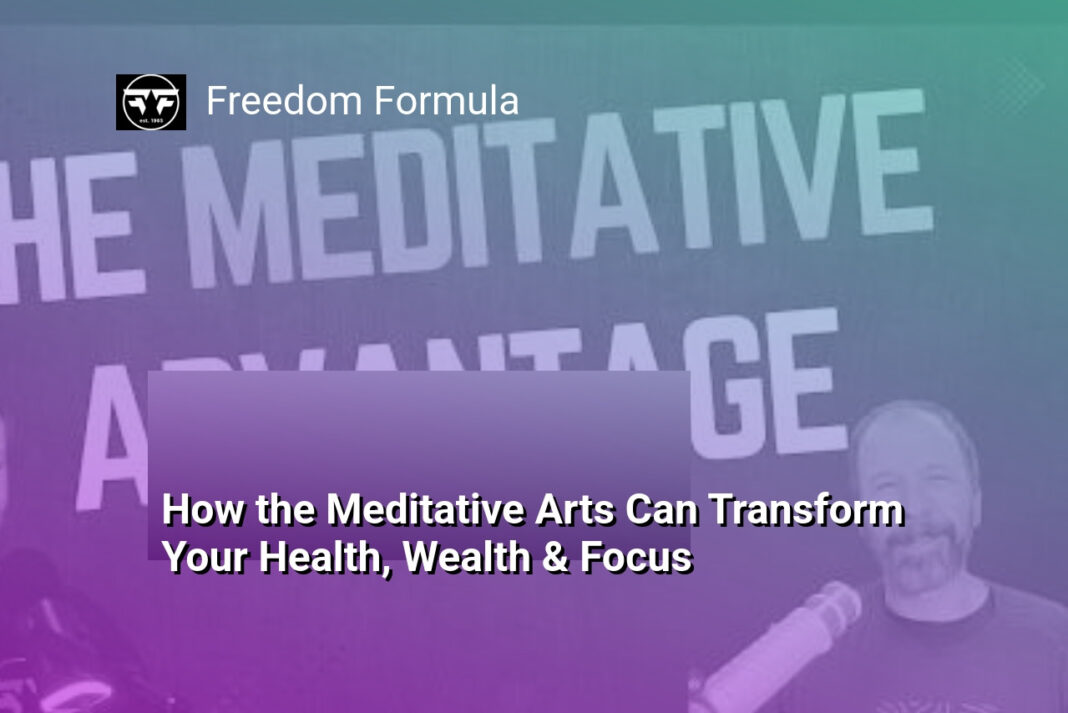The Bottom Line:
- I discovered that meditation isn’t about achieving a perfect, blissful state but rather embracing the natural ebb and flow of mental wanderings.
- Distractions during meditation are not failures but essential components of the practice, offering opportunities for mindful awareness and gentle redirection.
- My understanding evolved to see each moment of losing and regaining focus as a valuable training repetition for mental discipline.
- The misconception that meditation must be a serene, thought-free experience often discourages people from continuing their practice.
- I learned that meditation is a skill of returning to the present moment, using breath or body awareness as an anchor, regardless of how many times the mind drifts.
The Myth of Perfect Meditation
Embracing Imperfection in Meditation
Meditation is not about achieving a flawless, uninterrupted state of mental stillness. Many practitioners mistakenly believe they must eliminate all thoughts and distractions to meditate successfully. This misconception creates unnecessary pressure and frustration, often leading people to abandon their practice entirely. In reality, meditation is a dynamic process that involves acknowledging and gently redirecting your wandering mind, not forcefully suppressing it.
Understanding Mental Distractions
Distractions are an inherent part of meditation, not a sign of failure. Research suggests that an average meditator might experience up to 50 mental interruptions during a 20-minute session. These distractions can range from random thoughts about daily tasks to emotional memories or physical sensations. The true skill of meditation lies not in preventing these interruptions, but in how you respond to them. Each time you notice your mind has wandered and consciously bring your attention back to your breath or chosen focal point, you’re actually strengthening your meditation practice.
Transforming Interruptions into Learning Opportunities
Every moment of distraction can be viewed as a valuable training repetition. By repeatedly noticing when your mind drifts and gently guiding it back, you’re developing mental resilience and awareness. Techniques like focusing on breath, maintaining a specific posture, or using gentle movement can help anchor your attention. The goal is not to achieve a perfect, thought-free state, but to cultivate a compassionate, non-judgmental relationship with your own mind. Meditation is a practice of continuous return, where each redirect becomes a moment of mindful growth and self-understanding.
Understanding Distractions as Part of Practice
The Natural Flow of Mental Wandering
Distractions are not obstacles in meditation but fundamental components of the practice. When practitioners perceive interruptions as failures, they misunderstand the core essence of meditation. Mental wandering is a natural cognitive process, and meditation teaches us to observe these thoughts without judgment. Every time your mind drifts and you gently redirect your attention, you’re actually strengthening your mindfulness muscle. This process of noticing distractions and returning to your focal point is the real meditation practice, not achieving a state of perfect stillness.
Transforming Interruptions into Opportunities
Each distraction presents a unique opportunity for self-awareness and growth. Instead of becoming frustrated when thoughts intrude, view these moments as valuable insights into your mental patterns. The skill isn’t in preventing thoughts from arising but in how quickly and compassionately you can acknowledge them and return to your meditation anchor. Whether it’s your breath, a mantra, or bodily sensations, the repeated act of refocusing builds mental resilience and concentration. Over time, this practice helps develop a more balanced and non-reactive relationship with your thoughts.
Embracing Imperfection in Practice
Meditation is not about achieving a pristine, thought-free state but about cultivating awareness and acceptance. Experienced meditators understand that distractions are not just inevitable but integral to the practice. By reframing interruptions as part of the journey, practitioners can approach meditation with curiosity and gentleness. The goal is not to eliminate mental noise but to change your relationship with it, learning to observe thoughts without getting entangled in their narrative. This shift in perspective transforms meditation from a rigid discipline into a fluid, compassionate exploration of inner experience.
Why Your First Attempts Don’t Define Your Meditation Journey
Understanding the Learning Curve of Meditation
Meditation is not a destination but a continuous journey of self-discovery. Many practitioners mistakenly believe that their initial experiences define their entire potential for mindfulness. In reality, the first few attempts are merely introductory steps into a complex and deeply personal practice. Just like learning any skill, meditation requires patience, persistence, and a compassionate approach towards oneself.
Reframing Perceived Failures as Growth Opportunities
When you find your mind wandering during meditation, it’s not a sign of failure but a natural part of the process. The human mind is designed to think, and expecting immediate stillness is unrealistic. Each moment of distraction provides an opportunity to practice gentle redirection. By consistently returning your focus to your breath or chosen point of concentration, you’re actually training your mind’s flexibility and awareness.
The Transformative Power of Consistent Practice
Progress in meditation isn’t linear or immediately measurable. Some sessions might feel chaotic and challenging, while others might bring unexpected clarity. What matters most is maintaining a non-judgmental attitude and showing up consistently. Professional meditators and long-term practitioners emphasize that the true benefit comes from regular engagement, not from achieving a perfect meditative state. Your initial struggles are not roadblocks but stepping stones towards developing a more profound meditation practice that adapts and grows with your personal experience.
Transforming Mental Interruptions into Mindfulness Opportunities
Embracing Mental Wanderings as Growth Opportunities
Meditation is not about creating a sterile mental environment devoid of thoughts, but rather developing a compassionate relationship with your inner landscape. When intrusive thoughts, memories, or anxieties emerge during practice, they are not obstacles but valuable signposts pointing toward deeper self-understanding. Each mental interruption becomes an invitation to observe without judgment, gently acknowledging the thought’s presence and then redirecting attention back to your chosen point of focus.
The Neurological Perspective of Mental Redirection
Neuroscientific research reveals that repeatedly bringing your attention back to a focal point actually strengthens neural pathways associated with concentration and emotional regulation. What might initially feel like meditation “failure” is, in fact, a sophisticated cognitive training process. Every time you notice your mind has wandered and consciously return to your breath or meditation object, you’re essentially performing a mental push-up, incrementally enhancing your brain’s capacity for sustained awareness and emotional resilience.
Practical Strategies for Mindful Redirection
Developing skill in transforming mental interruptions requires practical techniques. Start by treating each distraction as a neutral event, without self-criticism. Imagine your thoughts as passing clouds in a vast sky – present, but not requiring engagement. Utilize anchoring techniques like focusing on breath rhythm, body sensations, or a specific mantra to gently guide your attention back when mental chatter becomes overwhelming. This approach transforms potential frustration into a compassionate, curious exploration of your inner mental dynamics, making meditation a dynamic and engaging practice rather than a rigid, unattainable ideal.
Practical Techniques for Sustainable Meditation Success
Creating a Personalized Meditation Framework
Developing a sustainable meditation practice requires understanding your unique needs and limitations. Instead of adhering to rigid traditional methods, design a flexible approach that integrates seamlessly into your lifestyle. Start by identifying realistic time slots in your daily schedule where you can consistently practice, even if it’s just five to ten minutes initially. Choose a meditation style that resonates with your personality and goals, whether it’s mindfulness, breath-focused, or movement-based practices like walking meditation.
Navigating Mental Distractions Effectively
Mental distractions are an inherent part of meditation and should be viewed as opportunities for growth rather than obstacles. When your mind wanders, practice gentle self-redirection without judgment. Develop a compassionate inner dialogue that acknowledges distractions and smoothly guides your attention back to your chosen focal point, such as breath or bodily sensations. This approach transforms potential frustration into a skill-building exercise, where each return to focus strengthens your mental resilience and concentration abilities.
Building Sustainable Meditation Habits
Consistency trumps perfection when establishing a meditation routine. Start with small, manageable commitments that you can realistically maintain. Experiment with different times of day, meditation styles, and environments to discover what feels most comfortable and engaging for you. Consider using technology like meditation apps or guided sessions to provide structure and motivation. Track your progress through journaling or simple reflection, celebrating incremental improvements and understanding that meditation is a skill developed over time, not a destination to be reached instantly.





